What Type of Braiding Hair Should You Choose?

Choosing the right braiding hair is essential for achieving professional, long-lasting styles that meet the high standards of today's business professionals.Whether you’re stocking a salon or supplying retailers, your choice impacts customer satisfaction, profitability, and your brand’s reputation. With options like human hair, synthetic fibers, and specialty products, it can feel overwhelming. This step-by-step guide breaks it down, offering practical tips and real-world examples to help B2B buyers in the braiding hair industry make informed decisions.
Step 1: Understanding Human Hair for Braiding
Human hair is the gold standard for braiding, offering a natural look and unmatched versatility. Sourced from real donors, this type of braiding hair can be styled with heat, colored, and treated like natural hair—perfect for clients who want premium, long-lasting braids.
Benefits:
Natural Appearance: Blends seamlessly with the client’s hair.
Styling Options: Can be curled, straightened, or dyed.
Durability: Lasts longer than synthetic alternatives with proper care.
Drawbacks:
Cost: Higher price point for both purchase and upkeep.
Care Needs: Requires more maintenance to stay in top condition.
Practical Tip:
Offer human hair as a premium service or product line. Educate clients or customers on its longevity to justify the investment.
When to Choose:
Ideal for high-end salons or retailers targeting clients who value quality over cost.
Perfect for styles requiring customization, like sleek braids or vibrant dye jobs.
Real-World Example:
A luxury salon in Chicago uses human hair for braiding services tailored to corporate clients attending galas. The ability to match their natural hair color and style with heat tools keeps them coming back.
Step 2: Exploring Synthetic Hair for Braiding
Synthetic braiding hair, made from artificial fibers, mimics human hair at a fraction of the cost. It’s a go-to for variety and affordability, available in countless colors and textures—though it lacks the heat-styling flexibility of human hair.
Benefits:
Budget-Friendly: Affordable for both businesses and clients.
Variety: Comes in pre-styled options and bold shades.
Low Maintenance: No need for intensive care routines.
Drawbacks:
Styling Limits: Cannot withstand heat or chemical treatments.
Lifespan: Wears out faster than human hair.
Popular Types:
Kanekalon: Smooth and shiny, great for box braids and twists.
Toyokalon: Slightly different texture, also versatile for braiding styles.
Practical Tip:
Stock a range of synthetic colors and textures to attract DIY customers or salons serving trend-focused clients.
When to Choose:
Best for beauty supply stores or salons catering to budget-conscious or experimental clients.
Suited for short-term styles or vibrant, temporary looks.
Real-World Example:
A Houston beauty supply shop stocks Kanekalon synthetic braiding hair in neon shades, appealing to younger customers who love switching up their style weekly.
Step 3: Specialty Braiding Hair Options
Specialty braiding hair caters to specific techniques or styles, offering efficiency and unique textures. These options can set your business apart by meeting niche demands in the market.
Types to Know:
Pre-stretched Hair: Synthetic and pre-extended for faster braiding—time-saving for busy stylists.
Marley Hair: Kinky texture ideal for Marley twists or faux locs, delivering a bold, natural vibe.
Crochet Hair: Pre-looped for crochet braiding, a quick-install favorite.
Practical Tip:
Survey your clientele or market to identify trending styles, then stock specialty hair accordingly.
When to Choose:
Choose based on popular braiding techniques in your area—like crochet braids in urban markets.
Use to diversify your offerings and attract clients with specific style preferences.
Real-World Example:
A Miami salon specializing in crochet braids keeps a steady supply of pre-looped crochet hair, cutting installation time and boosting client turnover.
Step 4: Evaluating Quality and Durability
Quality is non-negotiable, no matter the type of braiding hair. It determines how well the braids hold up and how happy your customers will be—key to repeat business in the B2B space.
How to Check Quality:
Smoothness: Hair should feel silky and resist tangling.
Shedding: Minimal loose strands when combed or handled.
Strength: Shouldn’t snap during braiding or wear.
Practical Tip:
Test samples by braiding a small section yourself—check for ease of use and finish quality.
Why It Matters:
High-quality braiding hair ensures professional results and builds trust with your clients or buyers.
Real-World Example:
A wig wholesaler in Atlanta only stocks tangle-free synthetic hair after losing customers to shedding issues with a cheaper brand.
Step 5: Considering Cost and Profit Margins
Striking a balance between quality and cost keeps your business profitable while meeting market demands.
Key Points:
Human Hair: Higher upfront cost but commands premium pricing.
Synthetic Hair: Lower cost, higher margins, especially in bulk.
Practical Tip:
Offer tiered pricing—budget synthetic options alongside luxe human hair—to appeal to all budgets.
When to Adjust:
Opt for synthetic for high-volume sales; reserve human hair for upscale services or products.
Real-World Example:
A salon chain stocks both human and synthetic braiding hair, pricing human hair braids at $200+ and synthetic at $80, catering to diverse clientele.
Step 6: Selecting Reliable Suppliers
Your supplier is your lifeline in the braiding hair business. A dependable partner ensures consistent quality and stock availability.
How to Choose:
Reviews: Look for feedback from other B2B buyers.
Samples: Test their products before committing.
Service: Ensure they’re responsive and reliable with delivery.
Practical Tip:
Build long-term relationships with suppliers for better pricing and early access to new braiding hair types.
Why It’s Critical:
A good supplier keeps your shelves stocked and your services running smoothly.
Real-World Example:
A Dallas retailer partners with a trusted Kanekalon supplier, securing bulk discounts and consistent quality for their growing customer base.
Conclusion
Choosing the right type of braiding hair—whether human, synthetic, or specialty—comes down to knowing your customers, weighing quality against cost, and partnering with reliable suppliers. As a professional hair stylist or B2B buyer in the human hair and wigs market, this step-by-step guide equips you to stock or use braiding hair that drives satisfaction and sales. Stay ahead by tracking trends and listening to feedback, ensuring your business thrives in this dynamic industry.
Ready to elevate your braiding game? Start applying these tips today to find the perfect braiding hair for your market!

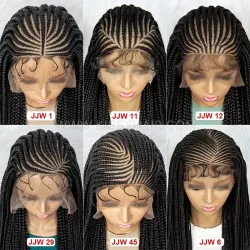
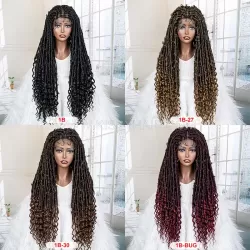
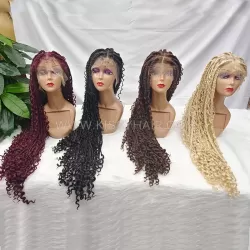
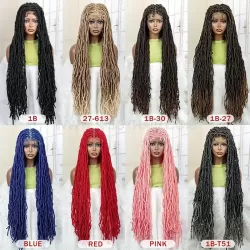
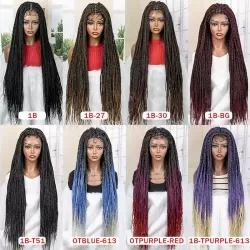
Leave a Comment